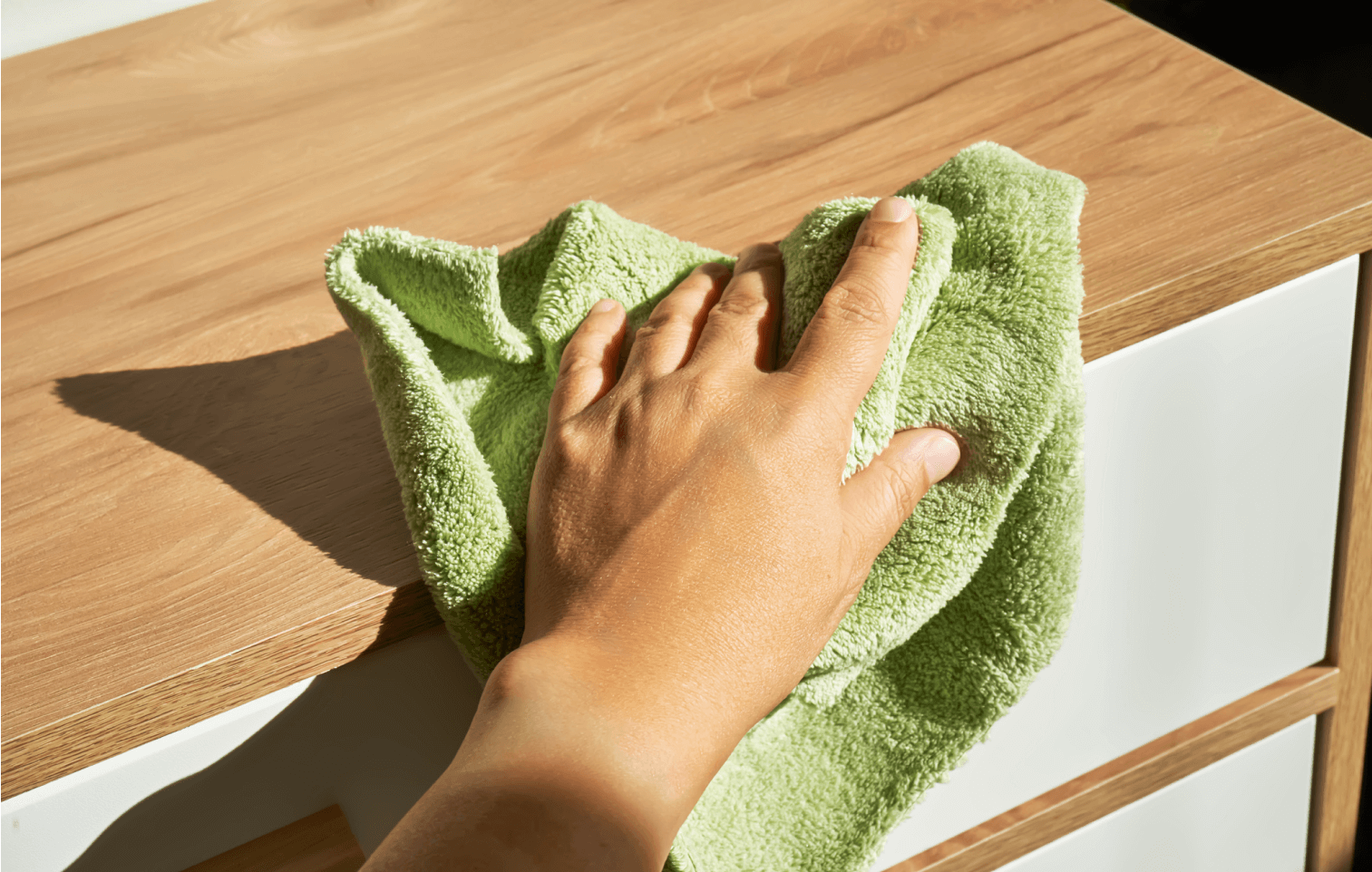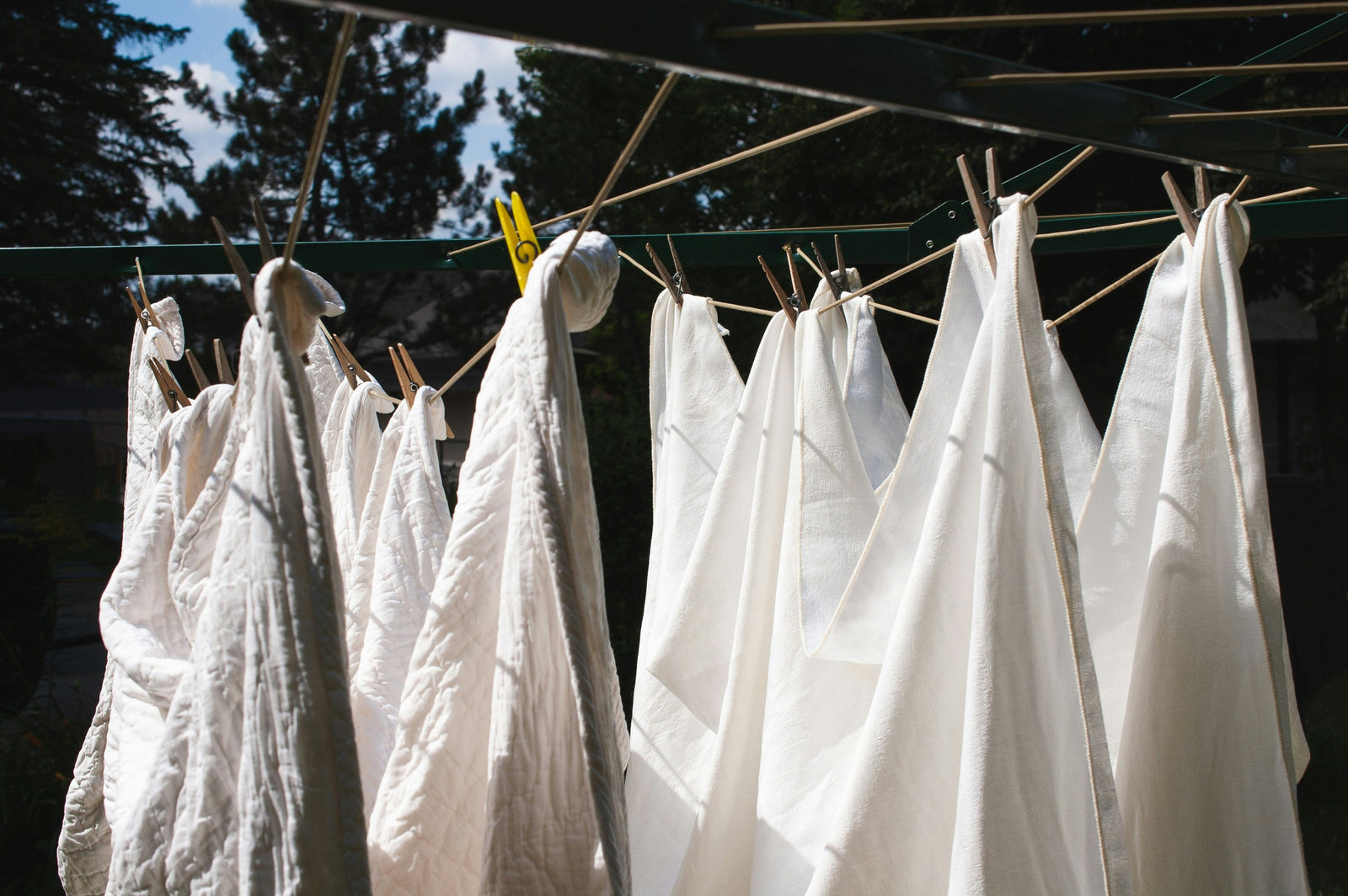Hydrogen Peroxide Vs Rubbing Alcohol: Which is Safest?

If you’re unsure about the best natural or safer disinfecting methods for your home, this article is for you!
Here, we’ll share everything you need to know about two popular low-tox disinfectants: hydrogen peroxide and rubbing alcohol.
You'll learn how each works, their benefits and downsides, safety precautions, and why (spoiler alert!) we prefer peroxide over rubbing alcohol for safer disinfecting.
You’ll also learn our signature low-tox disinfecting protocol for surfaces, along with links to other articles discussing other safe disinfecting options.
How Hydrogen Peroxide Works As A Disinfectant
Hydrogen peroxide has been used as a safe and low-tox disinfectant for surfaces and minor wounds for centuries.
Although its use on cuts and scrapes is no longer recommended (it can inhibit wound healing), 3% hydrogen peroxide (in the brown bottle) remains one of the safest, most eco-friendly, and most effective disinfectants.
Peroxide’s formula is H2O2. The extra oxygen molecule (O2) causes it to oxidize, which attacks the membrane lipids, DNA, and other essential cell components of germs and pathogens.[1]
Hydrogen peroxide is effective against a wide range of germs, including bacteria, yeasts, fungi, viruses, and spores.
It’s also now recommended by the CDC and OSHA as the frontline defense against mold (not chlorine bleach).
3% hydrogen peroxide (in the brown bottle), is widely available for household use and can be used to disinfect surfaces, remove mold, clean tile grout, whiten clothing, remove stains, and a bleach alternative.
Sodium percarbonate, also known as powdered peroxide (found in Branch Basics Oxygen Boost), is also effective for removing stains, whitening clothing, as a laundry booster, and a low-tox sanitizer when used with warm or hot water.
Related reading: The Power of Sodium Percarbonate for Cleaning
Is Peroxide Natural Or Chemical?
As discussed in How To Use Hydrogen Peroxide As A Safer Alternative For Cleaning, Laundry, Disinfecting And More peroxide is both a natural substance and a chemical.
Let’s break this down. The peroxide formula, H2O2, is very similar to water, but instead of having two hydrogen molecules and one oxygen (H20) it has two hydrogen and two oxygen.
Hydrogen and oxygen break down easily and naturally in our bodies and the environment. Our bodies also make hydrogen peroxide, which is broken down by specific enzymes.
Therefore, peroxide is considered a natural substance.
The chemical aspect comes in because hydrogen and oxygen are also chemical substances.
So, peroxide is a naturally occurring chemical substance, just like water.
The Benefits Of Hydrogen Peroxide For Disinfecting
Hydrogen peroxide offers many benefits for disinfecting, including:
- No VOCs.
- Effective removal of bacteria, viruses, mold, mildew, and yeasts.
- A strong safety profile when compared to chlorine bleach or Quats, especially 3% hydrogen peroxide.
- Versatility, 3% hydrogen peroxide can be used in most surfaces, mirrors, sinks, tubs, toilets, and even fruits and vegetables to remove germs and pesticide residue.
- No harmful residue.
- No additional harmful ingredients (just 3% hydrogen peroxide and 97% water).
- It works even better when used in Branch Basics Natural Disinfecting Protocol.
Hydrogen peroxide is also economical, usually costing less than $1.00 a bottle. We like putting a trigger sprayer on it for convenience.
The Downsides Of Hydrogen Peroxide For Disinfecting
There are minimal downsides to using hydrogen peroxide for disinfecting.
However, be aware of the following:
- Hydrogen peroxide has a natural bleaching action, so care must be taken when using on colored fabrics and some surfaces.
- Hydrogen peroxide, like most disinfectants requires dwell time for maximum germ-killing benefit. We recommend leaving it on 5-10 minutes before wiping.
- Hydrogen peroxide can irritate skin and eyes, so we recommend wearing gloves and avoiding contact with eyes.
- Powdered peroxide’s (sodium percarbonate) disinfecting actions are activated by warm or hot water. It still works great for laundry in cold water, but for disinfecting, you need to use warm or hot.
How To Use Peroxide For Disinfecting
If you have very sensitive skin or any cuts or scrapes, we recommend using gloves before disinfecting with peroxide.
- Remove germs from the surface using a natural soap-based cleaner, like Branch Basics All-Purpose.
- Use peroxide for peace of mind since proper cleaning with soap and water removes germs.
- Apply peroxide to the surface and let dwell for 10 minutes for disinfectant results.
- Wipe clean.
Learn more about how to use peroxide for various household cleaning applications in: How To Use Hydrogen Peroxide As a Safer Alternative for Cleaning, Disinfecting, Laundry, & More.
Safety Precautions For Using Peroxide For Disinfecting
3% hydrogen peroxide is a highly diluted form of peroxide that can even be used orally as a mouthwash. Therefore, it is unlikely to cause safety issues when used as directed.
However, the following precautions are recommended:
- Keep out of reach of children and pets.
- Never mix peroxide with vinegar. This creates a toxic gas that can be harmful.
- Note: You can absolutely use peroxide and vinegar separately, as outlined in Branch Basics Natural Disinfecting Protocol, but they must be used separately (use one, wipe completely, then use another) and stored in separate bottles
- Wear gloves if you have very sensitive skin, cuts, or scrapes.
- Take care when using on colored clothing as it is a natural bleach.
- Avoid contact with eyes.
- Do not swallow.
Regarding storage, hydrogen peroxide will begin to break down slowly after a year and may be slightly less effective.
This can be slowed by storing it in its original container away from direct sunlight and heat.
How Rubbing Alcohol Works As A Disinfectant
Rubbing alcohol is another popular disinfectant among the toxin-conscious.
Typically comprised of 70% isopropyl alcohol and 30% water, it works by denaturing germs’ proteins, which destroys the function of the cell, causing them to break down, dehydrate and die.[2]
It is also effective against a wide range of germs and pathogens, including various bacteria, viruses, yeasts, and fungi.
The Benefits Of Rubbing Alcohol For Disinfecting
Rubbing alcohol has some benefits over other disinfectants, including:
- It’s less harsh/lower-tox than disinfectant products containing Quats or bleach.
- It’s inexpensive and easy to use.
- It works faster than hydrogen peroxide, requiring shorter dwell time.
- It’s widely available.
- It’s effective against a variety of germs and pathogens.
The Downsides to Rubbing Alcohol For Disinfecting
Although rubbing alcohol is a safer choice than bleach, Quats, or other synthetic disinfectants, we don’t generally recommend it unless you’re in a pinch for the following reasons:
- Rubbing alcohol creates harmful VOCs (volatile organic compounds) when sprayed. These are responsible for many ill health effects, including sick-building syndrome, respiratory issues, headaches, nausea, memory impairment, brain fog, nosebleeds, vomiting, and more.
- Overexposure to rubbing alcohol is also associated with coughing, wheezing, headache, dizziness, confusion, loss of consciousness, and even death.[3]
- Rubbing alcohol is also more likely to leave behind germ-resistant bacteria, which can mutate into superbugs.
- The alcohol used to make rubbing alcohol (isopropyl alcohol) is distilled from petroleum products, which means it’s not eco-friendly.[4]
- Rubbing alcohol may damage certain surfaces like wood or granite.
- Rubbing alcohol cannot be used on foods.
- Finally, rubbing alcohol is harsher overall than 3% hydrogen peroxide and can cause great harm if ingested, inhaled, or if the excess is absorbed into the skin.
This is why we don’t recommend alcohol-based hand sanitizers, which can be very hard on the skin and liver if used frequently.
If you’re keen on using alcohol for disinfecting, we’d recommend cheap vodka over rubbing alcohol, which is a more natural, human- and eco-safe product.
How To Use Rubbing Alcohol As A Disinfectant
If you choose to use rubbing alcohol to kill germs, we highly recommend using it in a ventilated area away from babies, children, or anyone with respiratory illness or chemical sensitivity.
To use:
- Remove germs from the surface using a natural soap-based cleaner, like Branch Basics All-Purpose.
- Apply alcohol to the surface and let dwell for 3-5 minutes.
- Wipe clean or allow it to evaporate for maximum benefit.
Safety Precautions To Take When Using Rubbing Alcohol
- Always ventilate the area before use.
- Store out of reach of children or pets.
- Use rubber gloves and do not allow it to come into contact with eyes or skin.
- Never ingest rubbing alcohol or use it orally or on foods.
- We recommend pouring alcohol directly on the surface vs. spraying to reduce aeolsolizing the alcohol into the air, which can irritate lungs.
- Never mix rubbing alcohol with other cleaners, including peroxide.
- Alcohol is flammable, so store away from heat and sunlight.
Regarding storage, rubbing alcohol has a storage life of 2-3 years, at which point it begins evaporating and may lose potency. Store in a cool, dry place in its original container away from direct sunlight.
Hydrogen Peroxide Versus Rubbing Alcohol: Environmental Impacts
When it comes to peroxide vs. alcohol for environmental impact/sustainability, peroxide is the clear winner.
As a natural product, peroxide breaks down into hydrogen and oxygen, making it 100% biodegradable.
Conversely, rubbing alcohol comes from petroleum and is considered a hazardous waste by the EPA.
Is Hydrogen Peroxide Or Rubbing Alcohol Better At Killing Germs?
Both peroxide and alcohol are effective at killing most of the same germs and pathogens, including various forms of bacteria, viruses, fungi, mold, and yeasts.
Why We Love Hydrogen Peroxide As A Natural Solution
To recap, hydrogen peroxide is our top pick for a human- and environmentally-safe disinfectant because:
- It’s biodegradable and breaks down into oxygen and hydrogen.
- It’s human-safe.
- It is fragrance-free with no harmful VOCs.
- 3% peroxide is safe for household use and can even be used orally as a mouthwash.
- It kills the vast majority of common germs and pathogens, with research showing it works better than Quats for killing some germs and viruses.
- It’s inexpensive and widely available.[5]
- It’s safe for most surfaces.
- It’s an awesome bleach alternative for laundry and stain removal.
Get more tips on safe disinfecting in: How To Naturally Disinfect Surfaces [Complete Guide]
Toss The Toxins With Branch Basics
Isn’t it a relief to know you don’t have to rely on toxic products to clean and disinfect your home?
In most cases, removing germs using a natural soap-based cleaner, like Branch Basics, is all that’s required. This is preferable to killing germs, which can leave behind germ-resistant bacteria.
And when you need a disinfectant, such as during times of illness or for the kitchen, baby items, or bathroom, peroxide is a quick and safe option.
To learn more about safe and healthy cleaning and disinfecting with Branch Basics and other products, check out the following articles:
- How To Naturally Disinfect Surfaces
- 9 Natural Alternatives To Bleach For Disinfecting
- Is Branch Basics A Sanitizer Or Disinfectant
References Mentioned In This Article:
- https://www.cdc.gov/infection-control/hcp/disinfection-sterilization/chemical-disinfectants.html
- https://www.epa.gov/indoor-air-quality-iaq/volatile-organic-compounds-impact-indoor-air-quality#Health_Effects
- https://nj.gov/health/eoh/rtkweb/documents/fs/1076.pdf
- https://www.britannica.com/science/isopropyl-alcohol
- https://aricjournal.biomedcentral.com/articles/10.1186/s13756-018-0447-5#Sec13
Categories

Marilee Nelson
Marilee Nelson is an Environmental Toxins expert who has spent nearly 30 years advocating for the chemically-sensitive and chronically-ill. She is a Board Certified Nutritionist, Certified Bau-Biologist and Bau-Biology Inspector and specializes in Food As Medicine. She has helped thousands of families and individuals identify, heal and recover from toxic exposures and is on a mission to revolutionize the way American families view their health.








